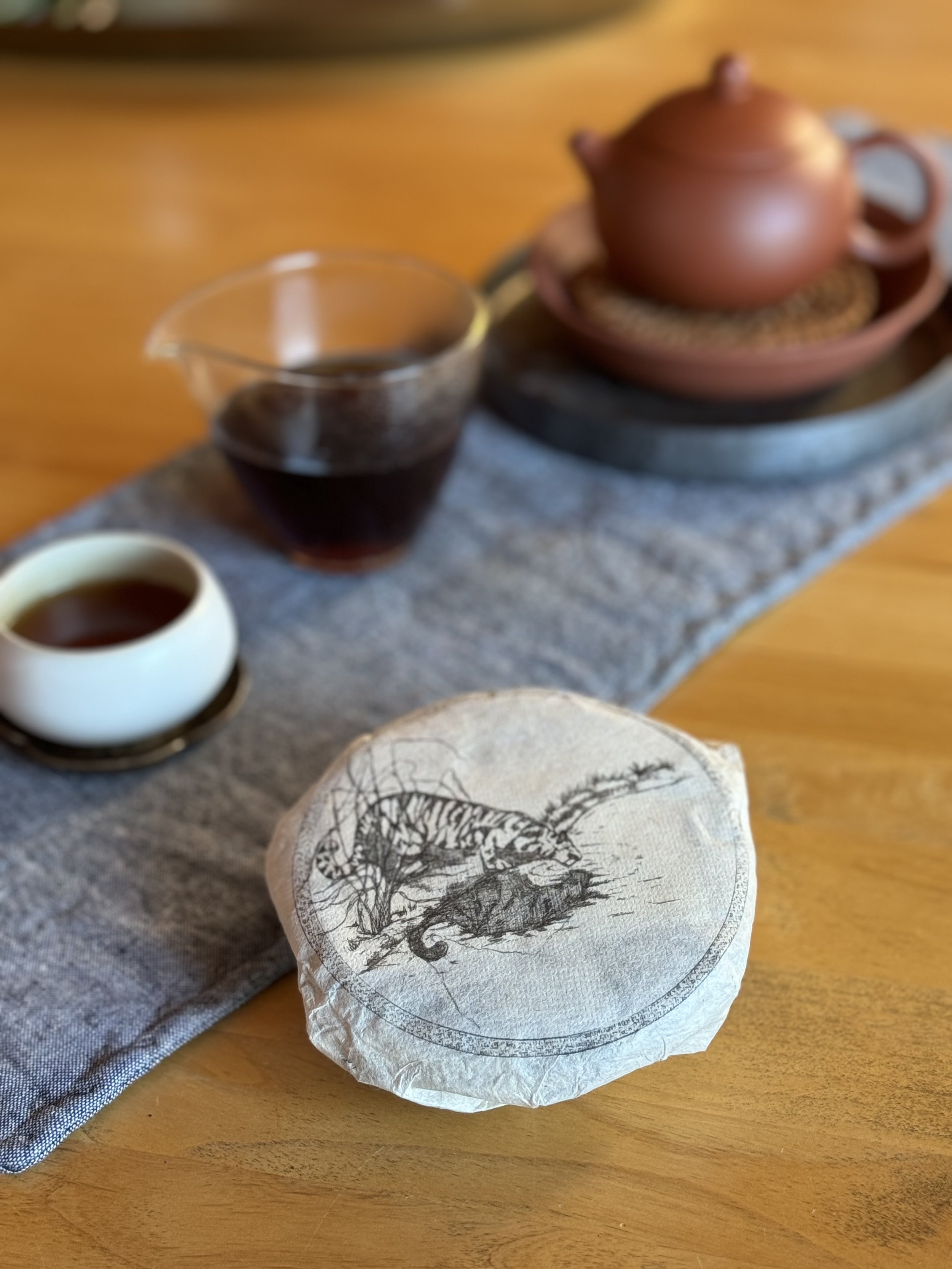Puerh tea is a specialized, fermented tea, originating from the forested mountains of the Yunnan Province in Southwestern China. The process of fermentation, preparation, and aging imbues the tea with rich flavors and enhanced health benefits.
Puerh tea is prized as a luxury collector’s product, comparable to fine wine. Each batch of tea features a unique profile of nuanced flavors. Our tea collection, featured at the Ritual Health Berkeley acupuncture clinic, features collector-grade teas as well as daily drinkers. All of our puerh teas are ethically sourced, grown, and prepared according to the rich cultural traditions of the mountain communities in Southwestern China.
Sheng (Raw) Puerh vs Shou (Ripe) Puerh
There are two main types of puerh: raw (sheng) and ripe (shou). The flavor of “raw” (sheng) puerh is often described as fresh, grassy, or vegetal. “Ripe” (shou) puerh tends to feature heavier, more earthy flavors.
Raw (sheng) puerh is harvested and pressed only twice a year: spring and autumn. The initial process involves harvest, withering, roasting, and pressing. Sometimes this tea is called “green” puerh, but it is not a true green tea. It may be enjoyed while young or it can be aged longterm to develop flavors.
Ripe (shou) puerh is sometimes called “cooked” tea, but more accurately, it is wet-piled in damp, warm conditions that enhance the microbial activity. The resulting fermentation develops the characteristic earthy, smooth flavor profile. By aging this prepared tea, we can add further complexity. Look for notes such as mineral, leather, camphor, wood…the flavor possibilities are endless!
Brewing Instructions for Puerh Tea
Proper brewing is essential for achieving a good infusion. One small pinch can be steeped many times.
Over-brewing the tea yields a muddy, dank cup. On the other heand, you can taste the water through the tea of an under-brewed cup. Many Californians are habituated to over-brewed puerh based on incorrect instruction pervading the community since the late 90’s.
What is most important is that you brew it how *you* like it. There can be lots of fussy rules around various tea traditions of Asia and many excellent tea teachers and schools, but ultimately: it is just tea. However you decide to work with this plant, tea helps us connect to simplicity and enjoyment!
Equipment
The traditional method for brewing puerh uses a “gaiwan” (a lidded bowl) or a “yixing” teapot, however, any small teapot or steeping device can be used effectively. A vessel that holds 150-200ml is ideal, but you can make tea in anything, even a mason jar. Any kettle will do to boil your water. but it is a luxury to have one that will keep your water boiling. These became popular during the pour-over coffee fad and are widely and cheaply available.
Puerh Brewing Instructions:
1. Portion your tea: Break off a small amount of tea from your puerh cake, approximately the size of an acorn. We recommend about 4-6 grams per 100ml of water. (A small digital scale is ideal for weighing out tea by the gram and are fairly cheap to purchase.)
2. Rinse your tea: Place the leaves into the brewing vessel. Bring your water to a boil, turn off the heat, and allow the qi to reconsolidate for just a few seconds, upwards of 210 degrees F is ideal. Pour the water over the leaves, just enough to cover the tea. Cover your brewing vessel and allow the leaves to open up for 45-60 seconds. Pour off this water and discard (preferably offering it to the earth). Now, smell the warm, rich aroma steaming up from the leaves!
3. Pour your first infusion: Like before, use water just off boil. Pour 100ml (or 3-4 ounces) of water over your rinsed leaves. Pour off the tea infusion into your drinking vessel or share cup. Do not let it sit and steep! The tea is ready to drink!
4. Repeat your infusion process 6-8 times as you wish.
You may let your tea leaves sit out for quite a while if you wish. You can leave puerh tea out at room temperature for up to 12 hours, and you can refrigerate it for up to 24 hours and brew the same leaves the next day.
Conclusion
As you get to know your teas, you will discover their unique personalities. Some teas have leaves that want more time or less time to open up in the initial rinse. Some will tolerate more steepings. As you gain experience, you’ll be able to taste more and more subtlety to the teas, even tasting the terroir behind them.
We look forward to seeing you in our Berkeley acupuncture clinic to share some tea in person. It is one of our favorite parts of the day! You are most welcome to message us with any questions or comments regarding brewing and enjoying your Ritual Health puerh tea. Until we meet again, enjoy!













